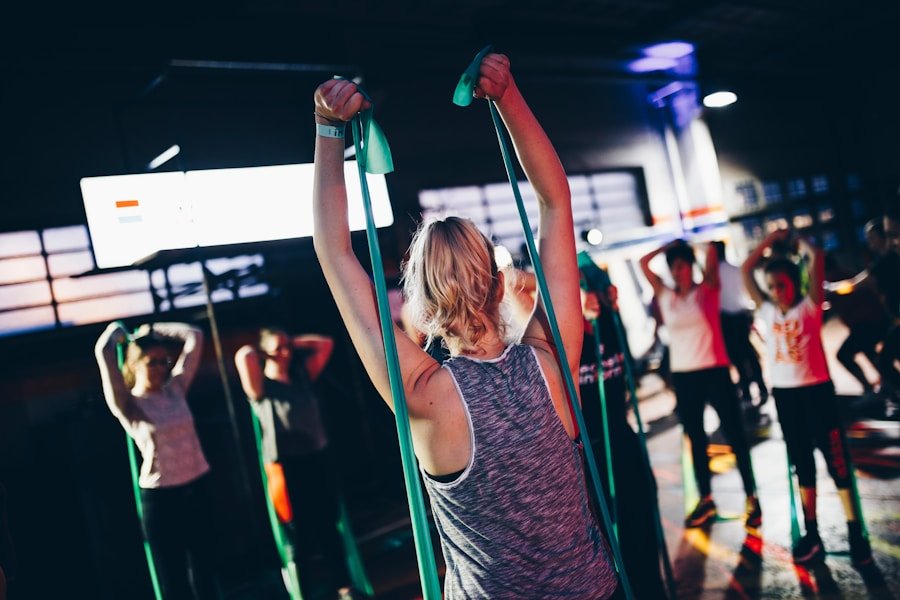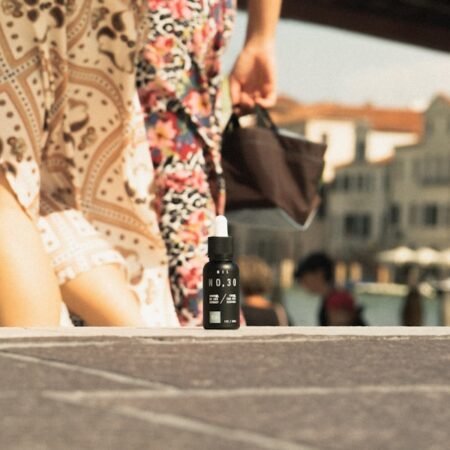Proper fitness gear is crucial for preventing injuries during exercise and physical activities. Regardless of whether you’re a professional athlete or a casual gym-goer, wearing the right gear can significantly impact your performance and overall safety. The right gear provides support and protection for your body, enhancing your workout experience.
Each piece of gear, from footwear to clothing and accessories, plays a vital role in preventing injuries and achieving overall fitness success. When it comes to fitness gear, it’s essential to recognize that one size does not fit all. Individuals have unique needs and requirements based on their body type, fitness level, and the type of physical activity they engage in.
Wearing proper fitness gear can reduce the risk of injury by providing support and stability to the body. For instance, a supportive sports bra can reduce breast movement during high-impact activities, preventing discomfort and potential damage to breast tissue. Similarly, wearing the right footwear provides proper cushioning and support for the feet, reducing the risk of foot and ankle injuries during workouts.
Investing in proper fitness gear is essential for injury prevention and overall physical well-being.
Key Takeaways
- Proper fitness gear is essential for injury prevention during workouts.
- Common fitness injuries can be prevented or minimized with the right gear.
- Footwear plays a crucial role in preventing injuries during physical activities.
- Choosing the right gear for your workout can significantly reduce the risk of injury.
- Fitness gear not only prevents injury but also improves performance during workouts.
Common Fitness Injuries and How Gear Can Help
Protecting the Knee Joint
Wearing a supportive knee brace can help to stabilize the knee joint and reduce the risk of ligament injuries during activities that involve jumping or sudden changes in direction.
Preventing Muscle Strains and Overuse Injuries
Similarly, wearing compression garments can help to improve blood circulation and reduce muscle fatigue, which can lower the risk of muscle strains and overuse injuries.
Protecting the Ankle Joint
One of the most common fitness injuries is ankle sprains, which can occur during activities that involve running, jumping, or quick changes in direction. Wearing proper footwear with ankle support can help to stabilize the ankle joint and reduce the risk of sprains and other ankle injuries. Additionally, wearing the right footwear can also help to prevent blisters and calluses, which can be painful and lead to discomfort during workouts. Overall, investing in the right fitness gear can help to minimize the risk of common fitness injuries and provide added protection for the body during physical activities.
The Role of Footwear in Injury Prevention
Footwear plays a crucial role in injury prevention during physical activities. The right pair of shoes can provide proper cushioning, support, and stability for the feet, which is essential for reducing the risk of foot and ankle injuries. When it comes to choosing the right footwear for your workout, it is important to consider factors such as foot type, arch support, cushioning, and stability.
For example, individuals with high arches may require shoes with added cushioning to provide support for their feet, while those with flat feet may benefit from shoes with added arch support. In addition to providing support and stability, proper footwear can also help to improve performance during workouts. Wearing the right shoes can enhance traction and grip, which is essential for activities that involve running, jumping, or quick changes in direction.
This can help to improve agility and reduce the risk of slips and falls during workouts. Overall, investing in the right footwear is crucial for injury prevention and overall performance improvement during physical activities.
Choosing the Right Gear for Your Workout
| Types of Fitness Gear | Role in Injury Prevention |
|---|---|
| Proper Footwear | Provides support and stability, reducing the risk of ankle and foot injuries |
| Compression Clothing | Helps improve blood circulation and reduce muscle soreness, decreasing the risk of strains and sprains |
| Protective Gear (e.g. knee pads, elbow pads) | Minimizes impact and protects joints during high-impact activities, lowering the risk of joint injuries |
| Properly Fitted Equipment (e.g. helmets, gloves) | Reduces the risk of head and hand injuries during sports and physical activities |
Choosing the right fitness gear for your workout is essential for injury prevention and overall comfort. When selecting fitness gear, it is important to consider factors such as fit, support, breathability, and durability. For example, when choosing workout clothing, it is important to select garments that provide proper support and compression for the body, as well as moisture-wicking properties to keep you dry and comfortable during workouts.
Similarly, when selecting accessories such as gloves or wrist wraps, it is important to choose products that provide proper support and protection for the hands and wrists during weightlifting or other strength training activities. When it comes to selecting fitness gear, it is also important to consider the specific requirements of your workout or physical activity. For example, if you engage in high-impact activities such as running or jumping, it is important to invest in supportive footwear with proper cushioning and stability.
On the other hand, if you participate in strength training or weightlifting, it is important to select gear that provides proper support for the joints and muscles involved in these activities. Overall, choosing the right fitness gear for your workout is essential for injury prevention and overall performance enhancement.
How Fitness Gear Can Improve Performance and Reduce Risk of Injury
Proper fitness gear not only helps to prevent injuries but also plays a crucial role in improving performance during workouts and physical activities. For example, wearing compression garments can help to improve blood circulation and reduce muscle fatigue, which can enhance endurance and overall performance during workouts. Similarly, wearing supportive footwear with proper cushioning and stability can help to improve traction and grip, which is essential for activities that involve running, jumping, or quick changes in direction.
In addition to improving performance, wearing the right fitness gear can also help to reduce the risk of overuse injuries and muscle strains. For example, wearing supportive knee sleeves or braces can help to stabilize the knee joint and reduce the risk of ligament injuries during activities that involve jumping or sudden changes in direction. Similarly, wearing wrist wraps or gloves can provide added support for the hands and wrists during weightlifting or other strength training activities, reducing the risk of strains or sprains.
Overall, investing in proper fitness gear is essential for improving performance and reducing the risk of injury during workouts.
The Impact of Clothing and Accessories on Injury Prevention
Supportive Clothing for Injury Prevention
Wearing supportive clothing can significantly reduce the risk of discomfort and potential damage to the body. For instance, a supportive sports bra can minimize breast movement during high-impact activities, preventing discomfort and potential damage to the breast tissue. Compression garments can also provide added support for the muscles and joints involved in physical activities, reducing the risk of overuse injuries and muscle strains.
Protective Accessories for Hands and Wrists
Accessories such as gloves and wrist wraps can provide added protection for the hands and wrists during weightlifting or other strength training activities. Wearing gloves can improve grip and reduce the risk of blisters or calluses on the hands, while wrist wraps can provide added support for the wrists during heavy lifting exercises.
Investing in Proper Clothing and Accessories
Overall, investing in proper clothing and accessories is crucial for injury prevention and overall comfort during workouts. By choosing the right clothing and accessories, individuals can minimize the risk of injury and maximize their performance during physical activities.
Tips for Maintaining and Replacing Fitness Gear to Prevent Injury
Proper maintenance and replacement of fitness gear are essential for injury prevention and overall safety during workouts. Over time, fitness gear such as footwear, clothing, and accessories can wear out or lose their effectiveness, increasing the risk of injury during physical activities. It is important to regularly inspect your fitness gear for signs of wear and tear, such as fraying seams or worn-out soles on shoes.
Additionally, it is important to follow manufacturer guidelines for cleaning and maintenance to ensure that your gear remains in good condition. When it comes to replacing fitness gear, it is important to pay attention to signs of wear and tear that may indicate that your gear is no longer providing adequate support or protection. For example, if your shoes show signs of worn-out soles or lack of cushioning, it may be time to replace them to reduce the risk of foot and ankle injuries during workouts.
Similarly, if your clothing or accessories show signs of stretching or loss of compression, it may be time to invest in new gear to ensure proper support and protection during physical activities. Overall, maintaining and replacing fitness gear is essential for injury prevention and overall safety during workouts. In conclusion, proper fitness gear plays a crucial role in injury prevention during workouts and physical activities.
From footwear to clothing and accessories, each piece of gear provides support and protection for the body while enhancing performance during physical activities. By investing in the right fitness gear and following proper maintenance guidelines, individuals can minimize the risk of common fitness injuries while improving their overall safety and comfort during workouts. Whether you are a professional athlete or a casual gym-goer, wearing the right fitness gear is essential for injury prevention and overall physical well-being.
FAQs
What is the role of fitness gear in injury prevention?
Fitness gear plays a crucial role in injury prevention by providing support, stability, and protection to the body during physical activity. Properly fitting gear can help reduce the risk of strains, sprains, and other injuries.
What are some examples of fitness gear that can help prevent injuries?
Examples of fitness gear that can help prevent injuries include supportive footwear, compression garments, knee braces, wrist wraps, and weightlifting belts. Each type of gear serves a specific purpose in providing support and protection to different parts of the body.
How does supportive footwear help prevent injuries?
Supportive footwear, such as running shoes with proper cushioning and arch support, can help absorb shock and reduce the impact on the joints during physical activity. This can help prevent injuries such as stress fractures, plantar fasciitis, and ankle sprains.
What should you consider when choosing fitness gear for injury prevention?
When choosing fitness gear for injury prevention, it is important to consider the specific needs of your body and the type of physical activity you will be engaging in. Proper fit, support, and comfort are key factors to consider when selecting fitness gear.
Can fitness gear alone prevent all injuries?
While fitness gear can significantly reduce the risk of injuries, it is important to note that it is not a guarantee against all injuries. It is also important to practice proper technique, warm up adequately, and listen to your body to prevent injuries during physical activity.














